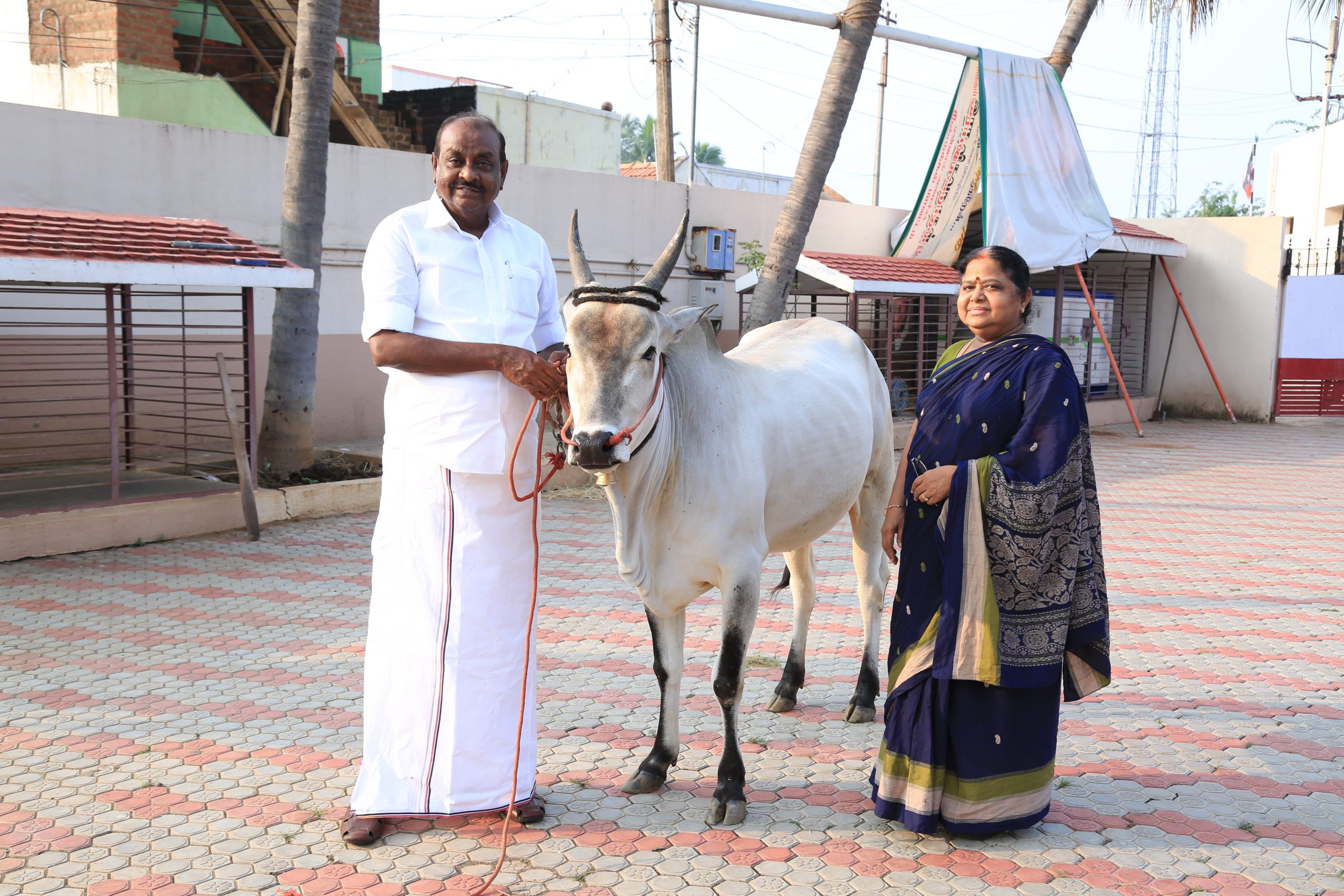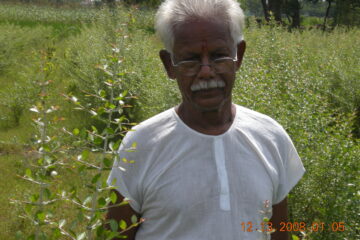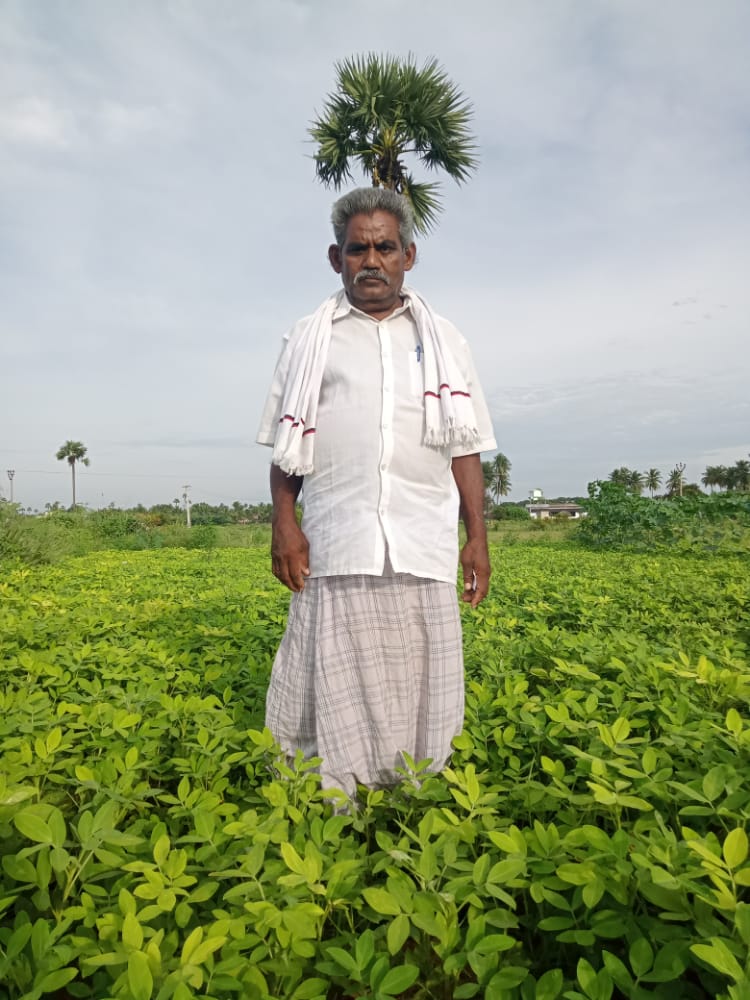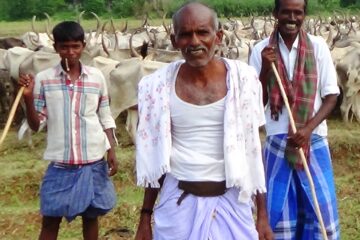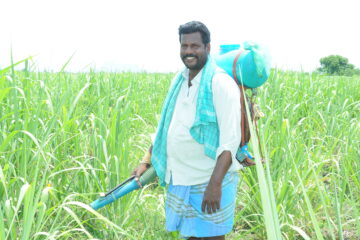Published in: August 2021 Issue
There’s a proverb that goes, “With ten goats, you’ll never lack money!” Having goats at home is as good as having money in a chest. You can sell them whenever needed and get cash immediately. That’s why most rural households have goats, which provide money for both household and farming needs.
In Tamil Nadu, goat farming happens on both small and large scales. Particularly in Ramanathapuram district, a region often dry and barren, goat rearing has become a primary livelihood for many locals.
People drive their goats across Tamil Nadu in search of grazing lands, staying with their families in areas with good grazing conditions to tend to their animals. The Keelakkaraisal breed of goats, particularly popular here, is widely raised.
One such goat farmer is Bharatham from Pothikulam village in Kadaladi Taluk, Ramanathapuram district. He and his family are currently staying near a garden at the foot of Vasimalai, north of Elumalai in Peraiyur Taluk, Madurai district, where they’ve found good grazing for their goats.
When we spoke to Bharat about goat farming, he shared:
“Goat farming is a family tradition. My grandfather, Karuppana Konar, and my father, Ramu Konar, were both involved in this. Now, it’s my turn.
My wife and children support me in this, making it possible to do this work well. We don’t stay in one place. We move around to find good grazing grounds for the goats.
There’s no rest for those who keep goats. During the day, we lead them to graze. At night, we must be close to them. We’re with the goats at all times.
Only if there’s some special reason do we go back to our hometown, and even then, only one person can go; someone always needs to stay back with the goats. We live with them as if we are one of them.
People say six months is the breeding season, but our Keelakkaraisal goats only give one kid per year. They don’t reproduce constantly. Keelakkaraisal goats are also more prone to disease than others, so we have to be very careful. There are 200 goats in our herd. Last year, a disease outbreak left many young goats dead, and only about seventy survived.
We give deworming medicine to the goats twice a year. During the early rainy season in March and April, goats that graze on fresh green grass are prone to anthrax, causing them to suddenly collapse and die. To protect them, we give anthrax vaccines when they start grazing on new grass. Likewise, to prevent other diseases, we vaccinate them against “Kaanai” disease in September.
We care for these goats as if they’re our own children. In return, they support us. The money we earn from renting the goats to graze in farmers’ fields helps cover our daily expenses.
We keep the female kids for breeding and raise the male kids well for sale, which helps cover other family expenses.
Without rain or shade, day or night, we live in the open without much protection, leading a nomadic life and raising these goats. But, in return, these voiceless creatures provide for us without fail, helping us make a living,” he said.
Elumalai K. Subramaniam






